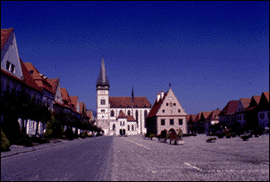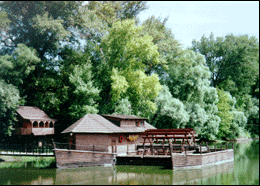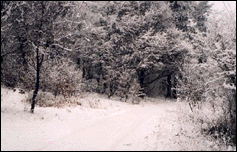 MAIN CHARACTERISTICS MAIN CHARACTERISTICS |
 Background Background |
In 1918, after World War I, the Slovaks joined the closely related Czechs to form Czechoslovakia. World War II viciously stopped the rapid development of Czechoslovakia, which had become one of the most advanced industrial countries in the world at that time. Following the chaos of the war, Czechoslovakia became a communist-ruled nation within Soviet-ruled Central and Eastern Europe. After the "Velvet Revolution" in 1989, Soviet influence collapsed and Czechoslovakia became free once again. Slovak public opinion supported the idea of independence and the Slovaks and the Czechs agreed to a peaceful separation on 1st January 1993. Since the separation Slovakia has experienced more difficulties than the Czech Republic in developing a modern market economy.
 Population Population |

The Slovak Republic has a population of 5,407,956 (as of July 2000). 69% of this figure accounts for the active population, aged between 15-64 years. One of the largest problems that face's the future of Slovakia is its very low birth rate. At present it stands at 0.12 % but a further decline has been predicted. A massive growth of the retired population (post-productive age group) could also lead to the collapse of the pension system, which is in need of radical reforms. Immigration is not a problem in Slovakia, although it will become more significant after entering the European Union. Average life expectancy is 70 years for men and 78 years for women.
Almost 85 % of the Slovak Republic population is of Slovak nationality. Other significant minority groups are Hungarian (10.8 %), Romanian (2 %) and Czech (1.2 %). Other minorities include Ruthann, Ukrainian, German and Polish. Minority rights are generally well respected in Slovakia, although tensions can run high regarding the gypsy minorities, particularly Romanian.
Slovakia is a Christian nation, however during the early post-communist period almost 30 % of the population was not baptized. Roman-Catholics make up the majority of the religious population with 60 %, other religions are Greek Catholic (3.4 %), Protestant (6.2 %), and Reformist (1.6 %). There is no religious tension in Slovakia as the right for choosing your confession is guaranteed in the Constitution. |  Climate Climate |

Slovakia has a continental climate, with four distinct seasons. Winters are typically cold and dry, while summers tend to be hot and humid. The average daily temperature range in Bratislava is -3° to 2° C (27° to 36° F) in January and 16° to 26° C (61° to 79° F) in July when temperatures tend to be cooler in the mountains. Bratislava receives an average of about 650-mm (about 26 inches) of precipitation annually. In areas of high altitude, snow is often present for as many as 130 days each year.

 Climate (Bratislava) Climate (Bratislava) |
Average Maximum Daily Temperatures:
| Jan: 2C (36F) | May: 21 (70) | Sep: 22 (72) | | Feb: 4 (39) | Jun: 24 (75) | Oct: 15 (59) | | Mar: 9 (48) | Jul: 26 (79) | Nov: 8 (46) | | Apr: 16 (61) | Aug: 26 (79) | Dec: 4 (39) |
NOTE: High Tatras Mountains are much cooler year-round!
Five day weather forecast for Bratislava |

